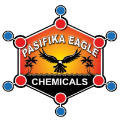
Hazardous Chemical Waste Management
PECL does provide services including manifestation, packaging, Transportation and transboundary movement of all chemical waste categorized as hazardous and fall under Dangerous Goods (DG). PECL strictly complies with Wagani and Basel Convention for the transboundary movement of Hazardous/DG waste. After the disposal, a comprehensive report and waste tracking documentation is furnished to client and CEPA as regulator to bestow surety assurance and confidence that the classified waste has been properly disposed.
FAQ'S (FREQUENTLY ASK QUESTIONS)
Always perform a "hazardous waste determination" before disposing of any chemical waste into the trash or down the drain. In general, chemical waste is hazardous if the pH is at or below 2 OR at or above 12.5 (corrosive waste) OR the flashpoint is below 140 degrees Fahrenheit (flammable waste) OR the waste is normally unstable (reactive waste) OR it is toxic. Chemical waste that is not flammable, corrosive or reactive is often managed as toxic.
Hazardous waste management is more thoroughly described in the classroom Hazardous Waste Management workshop, which is mandatory for all hazardous waste handlers.

